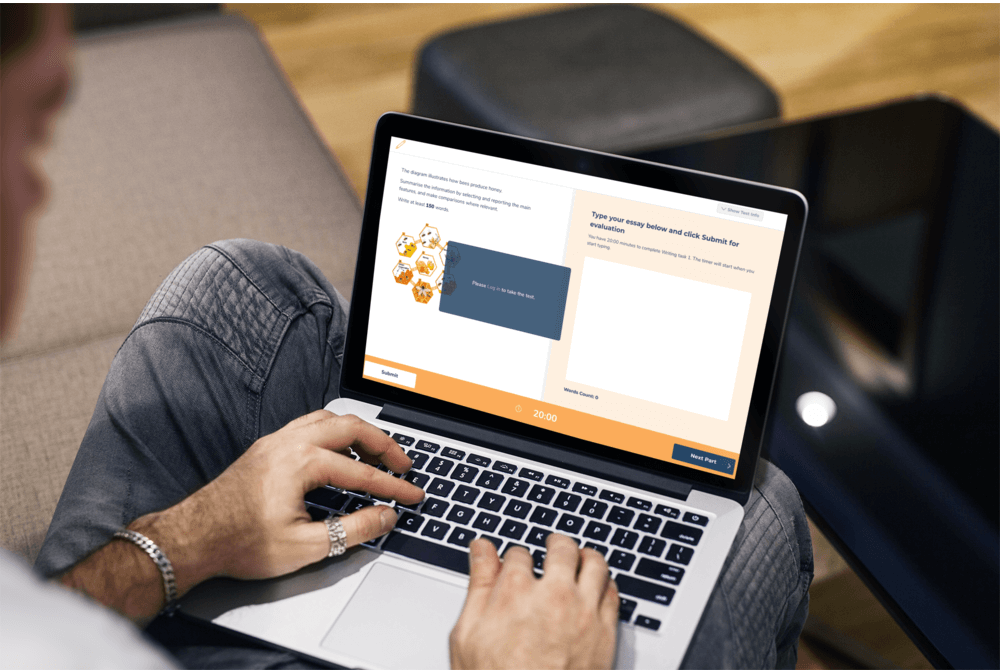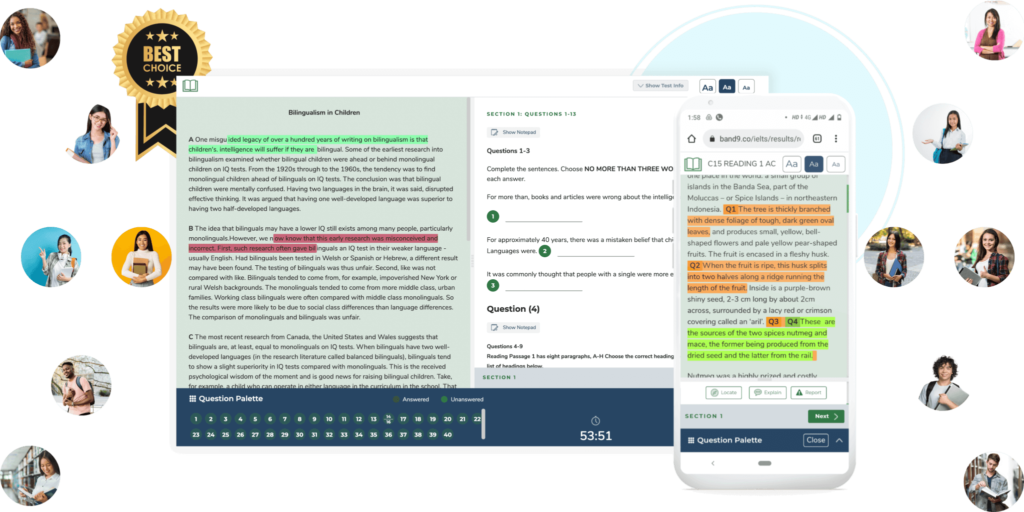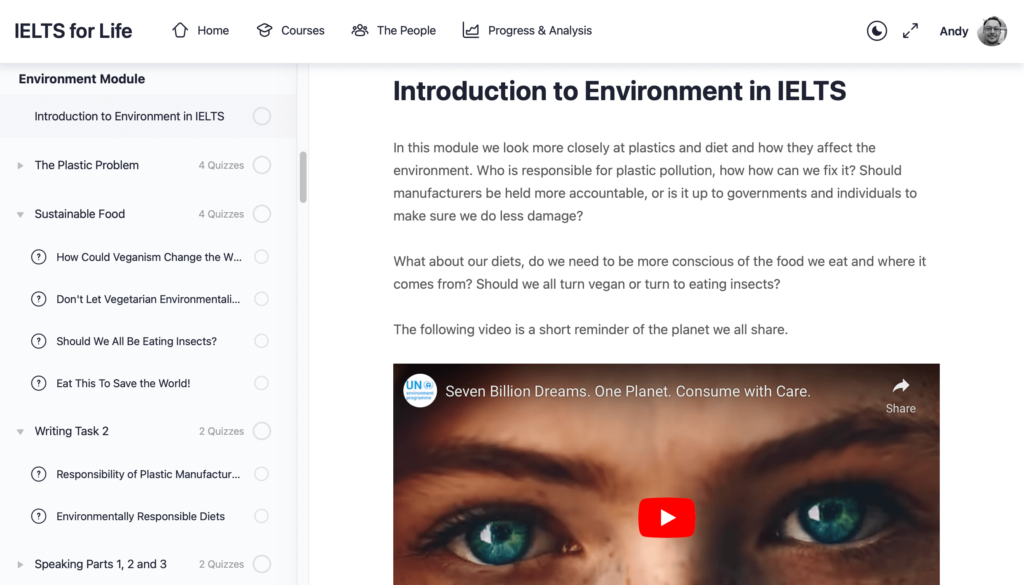Planning Online English Courses
By Andrew Matthews, IELTSLMS.com
Summary of Article
- How did COVID change education?
- What is Synchronous and Asynchronous Learning?
- How can you make online English courses more effective?
Education During the Pandemic
The COVID pandemic changed everything for teaching and learning in high schools around the world. Schools closed, schools opened, teaching went online, teaching was done through assignments sent to parents, teaching went back to classrooms and then blended or fully online again. In short, it was chaotic.
Although all of the tools for learning remotely already existed, like Zoom, Google Docs, various online quizzes, and so on, no one quite knew how to use them effectively.
Out of this nightmare for teachers and students, two modes of study evolved and are now being integrated into lesson planning and curriculum design . These modes are called Synchronous Learning and Asynchronous Learning.
When Education Changed
When schools and universities first closed their campuses to students, teachers were told to take their classes online. Material was mostly available in some kind of digital format, and the students still had their textbooks.
No problem right? Copy what you do in a normal classroom except with everyone on Zoom and do assignments on Google Docs.
But it soon became apparent that this didn’t work. Why? Well basically because no one was at school. People change when they physically enter a school and classroom, teachers, students, and even parents. It ‘feels’ different.

Online Behaviour
There are accepted behaviours for everyone at school, but these just don’t exist when you are sitting in your bedroom with your pyjamas on, meeting online and wondering if you will ever be able to see your friends again.
Students were less engaged, attended less often and, more often than not, turned their cameras off. So the teachers weren’t really getting any feedback on progress or problems.
At this point, teachers found that student motivation was incredibly low in general. Motivation is arguably the most important factor to influence outcomes in learning English, or anything else for that matter. Classrooms offer extrinsic motivation – “Do this or you will be punished”, this vanished online. Intrinsic motivation, the motivation that comes from within you, also fell in many students who were isolated in their homes for long periods of time.
Better Online Education
What ended up happening in many places was that teachers would set assignments for students to do outside of the class time, and then meet up in the classroom (online) to discuss problems or to set up the next activities. This helped students and teachers manage their time and their experiences better. Contact improved, engagement improved, motivation improved and most people felt that they were getting somewhere again, not just waiting for the pandemic to end.
This experience, though difficult for so many, has led to a new and better approach to online learning, the understanding and use of synchronous and asynchronous learning.
Synchronous Learning
So what is Synchronous Learning? Basically it is when students and teachers are together in one place. Previously, this would be in a classroom, but now we think of Zoom or Google Meet.
Let’s consider online learning only. What is a good use of time for you and your students when you are meeting online?
If you want your classes to be effective, they must be active and take advantage of this ‘synchronous’ time. So doing reading or listening exercises, writing essays, or assigning other individual non-communicative tasks, is not going to be much fun.
Class time is much more effective and motivating if it is communicative and oriented directly to the needs of your students. Brainstorming, discussion, debate, outlining essays and directly addressing problems or misunderstanding are most effective in a synchronous setting. Students are more likely to be motivated and engaged, and they are much more likely to enjoy this time and hence learn from it.
Asynchronous Learning
Asynchronous learning is what we do when not with the teacher, in the class or online. You could think of homework, assignments, reading, watching lectures and research as examples of asynchronous learning.
In a face-to-face classroom, teachers would often set students tasks to do in class, like reading or essay writing, and then monitor and help when necessary. This can work in a classroom, and it can ensure that students actually do the work!
But online this doesn’t work so well. Students are distracted at home, often have their cameras off anyway, and there is no real sense of community. So activities that can be done alone, like reading, listening, research, etc., were moved to offline, asynchronous mode, during COVID.
This worked, it was successful. Students were able to take control of their education. They could complete tasks at times that suited them, and in ways that best fitted their personal learning style. They were then more prepared during synchronous sessions to talk about problems they faced, debate different ideas, and brainstorm for the next task.

Planning English Courses Online
The great advantages of online courses is that people can attend from any location, they can still meet and collaborate with their fellow students, and they have direct access to their teachers.
Planning courses with synchronous and asynchronous modes of learning from the beginning means that you can make the best use of your available time while carefully monitoring your students’ understanding and progress. You can make synchronous time more fun and more useful and get important feedback as to how your students are doing.
The tools available on IELTSLMS.com are built in to help you plan and deliver great lessons. If you have a look at one course, Mastering IELTS: A Theme Based Approach, you will see how this can be achieved.

Tasks like reading, listening, essay writing and recording spoken answers can all be done asynchronously. This leaves synchronous class time to answer questions, discuss problems, brainstorm and debate, and to set up students for their productive tasks by outlining essay responses or speaking responses. These activities are what the students need when they are with you, and what will make class time more enjoyable and more motivating.
The Future of Online Teaching
Online education is here to stay, it makes sense, it works. But courses can not simply be lifted from a traditional classroom and put online. Successful courses not only take into account the logical structure and contents of a course, but consider how to make the most of both the synchronous and asynchronous modes of teaching and learning.
IELTSLMS.com is the only platform that allows you to structure and deliver effective courses and classes with all the tools for grading and assessing already built in. If you are a teacher looking for an effective IELTS course, try Mastering IELTS: A Theme Based Approach.
Or, if you want to make your own courses using your own branded site, contact us now to see how we can make that happen for you.




